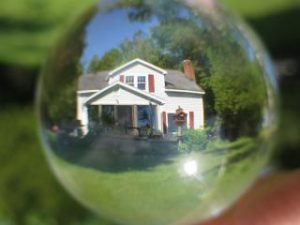Everything You Need to Know to Choose a Sump Pump Installer
 A sump pump is something that you may not realize that you need until it is too late. Essentially, a sump pump is a machine that removes excess water from an area such as a basement or a crawl space. Most sump pumps consist of a motor, a float switch, and water inlet and discharge pipes.
A sump pump is something that you may not realize that you need until it is too late. Essentially, a sump pump is a machine that removes excess water from an area such as a basement or a crawl space. Most sump pumps consist of a motor, a float switch, and water inlet and discharge pipes.
You can purchase a sump pump at many home repair or hardware stores but when it comes to installing the sump pump, do-it-yourself installation is not recommended. Installation mistakes can be costly and potentially dangerous. Ask a sump pump installer instead.
Professional Installation
For one thing, a sump pump installer can determine the exact type of sump pump necessary for the size of the home or building. While many people simply purchase a ½ or ¼ hp sump pump and hope for the best, a professional can specify the right size needed. Other size considerations include the dewatering flow rate and pump lift requirements.
Many homeowners try to install the sump pump on the foundation drain, but if the drain becomes damaged or clogged, the sump pump will not work or other areas of the home may flood. However, connecting to the municipal sewer drain is not allowed in all regions and may even be illegal.
If the discharge line is not properly secured, the pipe may move and spray water all over the place. Moreover, the sump pump must be connected to a safe electrical outlet or circuit.
The water destination must move away from the building to prevent potential foundation damage and the sump pump itself placed in a safe area, away from common living areas.
More about Sump Pumps
The most common location for a sump pump is a basement, particularly in areas prone to flooding. Other areas where you might need a sump pump are a crawl space, an outdoor well pit or even a boiler pit.
Note that a sump pump is different than a septic or sewage pump, meant to remove debris and liquid.
Sump Pump Size
One important consideration when it comes to sump pumps is the size of the pump. If the pump is too small to handle the volume of water that enters the area, only some of the water exits or the pump will remove water too slowly to avoid damage.
Sump Pump Types
There are four types of sump pumps:
1. A submersible pump has a protective cover that surrounds it and a separate float that is responsible for turning the pump on or off. This type of sump pump will work even when completely underwater.
2. Pedestal sump pumps have a motor positioned on the top of a pipe, which rotates a shaft to turn on or off the pump impeller. The impeller is on a pedestal on the bottom, which is under the water level. Note that the motor must stay separate and dry in order to operate. Pedestals are primarily an older type of sump pump.
3. Battery sump pumps charge when normal electrical power is on. Then if the power fails, the sump pump holds battery power and can operate without electricity. This type of sump pump is recommended in homes where storms frequently cause loss of power.
4. Water-powered sump pumps require manual operation by turning a valve near the pump, allowing water to move through and start the pump with municipal water pressure. This type of sump pump also does not require electricity.
Note that other types of pumps such as a septic or sewage pump cannot act reliably as a sump pump, so if you have a different kind of pump, do not expect that pump to remove emergency water levels without an additional sump pump attached to the system.
Installation
There are two types of sump pump installation offered by a sump pump installer:
Simplex
Simplex installation refers to the installation of a single sump pump, whether that pump is submersible or pedestal.
Duplex
There are two methods of installation for duplex sump pumps, reserve and alternating.
Reserve installation refers to a connection of the sump pump to the septic pump so that the septic pump acts as a primary method of removing water and the septic pump acts as a secondary method of water removal. The sump pump system will turn on if water reaches past a control float switch, indicating that the primary pump cannot handle the amount of water coming in.
Alternating installation refers to the installation of two sump pumps that are wired so that the pumps alternate between operating, reducing the overall load on each pump. This is a common installation for commercial buildings but can be useful in large homes or residences as well.
Sobieski serves Wilmington, Delaware and the surrounding areas. Our goal is to help educate our customers about energy and home comfort issues (specific to HVAC & plumbing systems).
For more information about hiring a sump pump installer and other home comfort topics, visit our website today. Don’t forget to view our special offers to save money on service & more!
Image Credit: katerha







